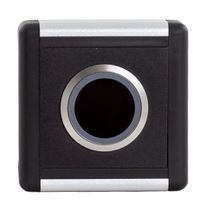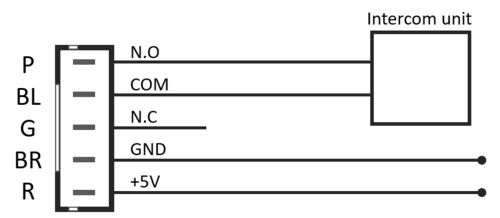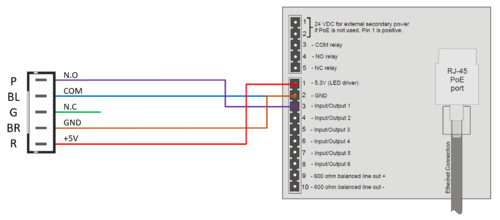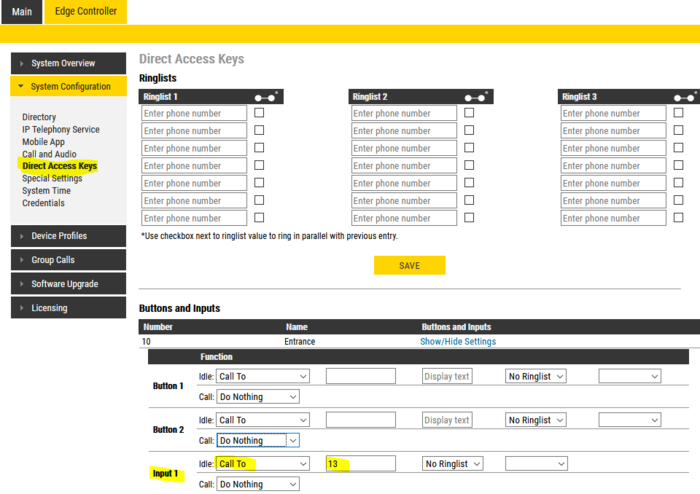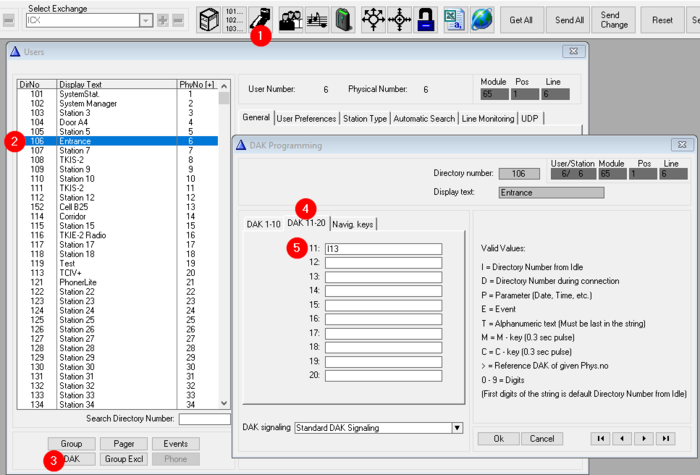Touchless sensor (w/ backbox): Difference between revisions
From Zenitel Wiki
No edit summary |
No edit summary |
||
| Line 1: | Line 1: | ||
[[File:2390020100 touchless sensor 1.jpg|thumb|200px|right|Touchless sensor, item 2390020100]] | [[File:2390020100 touchless sensor 1.jpg|thumb|200px|right|Touchless sensor, item 2390020100]] | ||
The '''Touchless sensor''' (item 2390020100) is an IR-sensor that connects to | The '''Touchless sensor''' (item 2390020100) is an IR-sensor that connects to Zenitel IP stations and is used to activate calls with gesture recognition instead of pressing the call button. | ||
== Highlights == | == Highlights == | ||
Revision as of 12:11, 19 May 2021
The Touchless sensor (item 2390020100) is an IR-sensor that connects to Zenitel IP stations and is used to activate calls with gesture recognition instead of pressing the call button.
Highlights
- Input Voltage: 5V
- Available contacts: Normally Open & Normally Closed
- Sensor active time: 0,5 secs
- Operating distance: 15cm
- IP66
Connections
Connections are made to the switch using the supplied 5 pin plug.
Correct orientation of the plug is ensured by the connector locating guides.
Color code
- Red - +5 Volt supply
- Brown - 0 Volt supply
- Green - Normally Closed
- Blue - Common
- Purple - Normally Open
Typical Application
Use Case Examples
Touchless sensor - wiring example:
Configuration on IC-Edge
- To configure the Input select Edge Controller > System Configuration > Direct Access Keys.
- Select Show/Hide Settings on the station you want to configure.
- Configure the Input to Call To, and enter the directory number to call when activated.
More details can be found on Direct Access Key Settings.
Configuration in ICX-AlphaCom
To configure the input to call a preconfigured number:
- Select Users & Stations
- Select the intercom station to which the touchless sensor is connected
- Open the DAK window
- Select the tab DAK 11-20
- On DAK 11 (= input 1(*)) enter the directory number to call when the input is activated
(*) Input 1 - 6 on Turbine stations are mapped to DAK 11 - 16.
More information is found under DAK programming.

